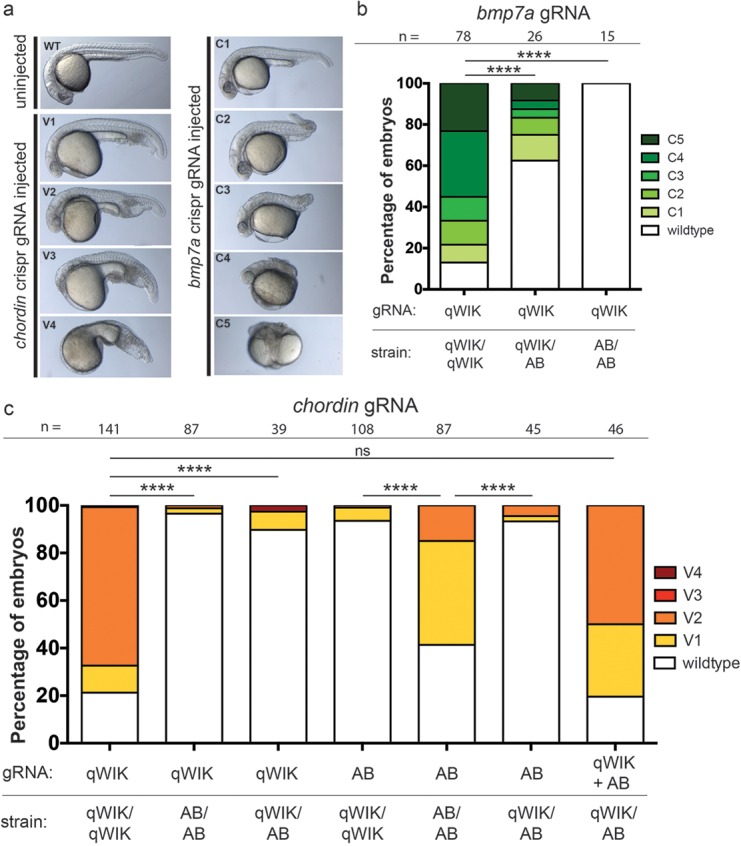Fig. 2.

Heterozygous polymorphisms within CRISPR/Cas9 target sites can internally control recessive phenotypes generated in F0 injected embryos. (A) Bright field lateral view images of 1 dpf embryos uninjected or injected with gRNAs and cas9 mRNA to target the chordin or bmp7a locus. chordin gRNA injected embryos manifested a range of ventralised phenotypes (V1-V4), and bmp7a gRNA injected embryos a range of dorsalised phenotypes (C1-C5) (Mullins et al., 1996), consistent with biallelic disruption of these dorsoventral patterning genes. (B) Graphical representation of the phenotypic categories of embryos injected with a ‘qWIK-specific’ gRNA into either a qWIK incross (qWIK/qWIK), a qWIK crossed with AB (qWIK/AB) or AB incross (AB/AB). Imperfect complementarity reduced the frequency of dorsalised phenotypes. (C) Graphical representation of ventralised phenotypes following chordin gRNA/Cas9 mRNA injection into different strain crosses. ‘qWIK-specific’ into qWIK/qWIK, ‘AB-specific’ into AB/AB or co-injection of ‘qWIK-specific’ and ‘AB-specific’ gRNAs into qWIK/AB cross resulted in a high proportion or embryos with ventralised phenotypes whereas very few embryos with ventralised phenotypes were observed for injection of ‘qWIK-specific’ into AB/AB or qWIK/AB or reciprocally ‘AB-specific’ into qWIK/qWIK or qWIK/AB. Total number of embryos injected for each category is represented above graphs. In B and C, ****P<0.0001, as determined by Fishers exact test; ns, not significant.
